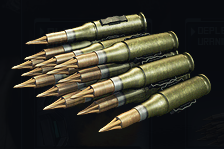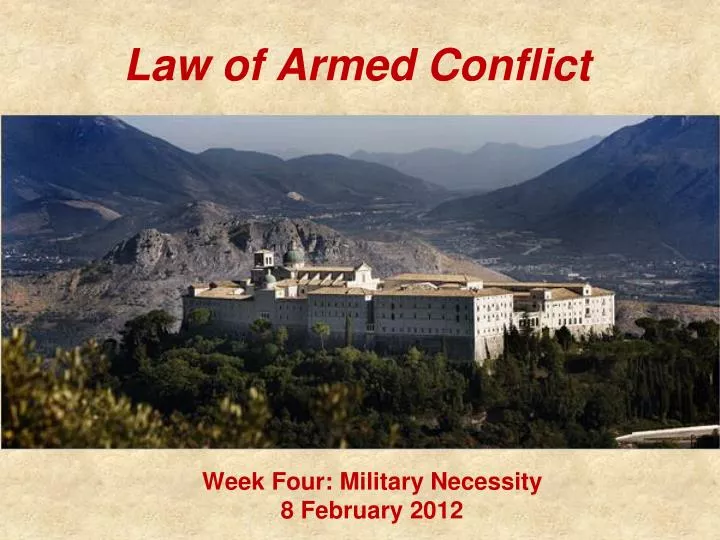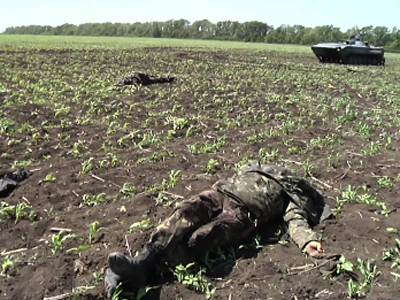
The Legality of Depleted Uranium Shells
And Their Transfer to Ukraine
Stuart Casey-Maslen / Lieber Institute West Point
(March 24, 2023) — The decision by the United Kingdom (UK) in March 2023 to transfer depleted uranium tank shells to Ukraine provoked a fierce reaction from senior Russian political and military officials. President Vladimir Putin warned that Moscow would “respond accordingly, given that the collective West is starting to use weapons with a ‘nuclear component’.”
Sergei Shoigu, Russia’s Minister of Defence, claimed that the decision left “fewer and fewer steps” before a potential “nuclear collision” between Russia and the West. Given the heated rhetoric, this post assesses the legality under the law of armed conflict of the use of depleted uranium shells as a means of warfare, as well as the compatibility of the UK’s decision on transfer with its obligations under international law, including disarmament law.

Law of Armed Conflict Considerations
The law of armed conflict (LOAC) prohibits the use of any weapon according to two general rules. Either the weapon is inherently indiscriminate or it is of a nature to cause superfluous injury or unnecessary suffering. In either case, a weapon falling foul of the respective rule may not be used as a means of warfare.
The assessment of the first of the two rules can be dispensed with in short order. An indiscriminate weapon is one that can neither be directed at a specific military objective nor can its effects be limited in time and space in accordance with LOAC stipulations. The shells being transferred are specifically for use in the Challenger II tanks the UK is also providing to Ukraine.
The Challenger II is fitted with a 120mm rifled tank gun that is targeted using a laser-range finder. This adjusts the gun before firing, taking into account wind, temperature, and the direction the target vehicle is moving. The fact that shells contain depleted uranium does not diminish their precision. While the requisite accuracy demanded by the principle of distinction lacks a specific figure in contemporary law, such as a defined circular error probable (CEP), the 120mm gun on the Challenger is certainly within its confines.

Radioactive Bullets and “Superfluous Injury”
A little more reflection is needed when it comes to the assessment of the “superfluous injury” rule. This calls for understanding of both what depleted uranium is and what it is not. Depleted uranium is a dense metal generated as a by-product of enriching natural uranium for nuclear fuel. It is not material that is capable of a nuclear chain reaction.
That said, depleted uranium is still radioactive — and therefore neither inert nor harmless — although its radioactivity is much lower than is the original nuclear material. It is used in armour-piercing shells to enhance their penetration. Depleted uranium munitions, which were developed by the United States and UK in the 1970s, were first used in the Gulf War in 1991, and then in Kosovo in 1999, and during the Iraq War in 2003.
As detailed by the UN Secretary-General in his 2016 report, “Effects of the use of armaments and ammunitions containing depleted uranium,” the International Atomic Energy Agency (IAEA) has conducted a number of studies into the use of depleted uranium shells and bombs.
As a result of their analysis, the IAEA has concluded that post-conflict depleted uranium residues dispersed in the environment do not pose a radiological hazard to the local population. The “presence of large fragments of, or complete, depleted uranium ammunition” could, however, “result in exposures of radiological significance to individuals who are in direct contact with those radioactive materials, for example, if they are collected as souvenirs or when military vehicles which have been hit by such ammunition are reprocessed for scrap metal” (UN doc. A/71/139, 2016: 9).
The United Nations Environment Programme (UNEP), which has evaluated studies on the impact of depleted uranium munitions on military veterans, has identified “[n]o clinically significant pathology related to radiation exposure” (UN doc. A/71/139, 2016: 10).
The customary law prohibition of means of warfare of a nature to cause superfluous injury or unnecessary suffering only renders unlawful those weapons whose military necessity is clearly outweighed by the expected injury or suffering inflicted on a combatant. In particular, injuries provoked by an anti-personnel weapon that are objectively gratuitous or are substantially more than necessary to render a soldier hors de combat are unlawful.

DU: Deadlier on Impact
Depleted uranium shells sharpen on impact, which further increases their ability to bore through armour, and they ignite after contact. As the US Environmental Protection Agency has observed, depleted uranium is both a toxic chemical and radiation health hazard when inside the body. But the military advantage offered by depleted uranium shells — their significantly enhanced armour-piercing capability against other tanks — is assuredly greater than is the relatively minimal risk to fighters (based on the available evidence).
This also extends to the hazard posed to military explosive ordnance disposal personnel engaged in post-conflict clean-up. One may therefore conclude that the use of depleted uranium tank shells in armed conflict is not inherently unlawful, either because the shells are indiscriminate or because they inevitably cause unnecessary suffering.
Transfer Considerations
Of course, any weapon may be used unlawfully, and tank shells are no exception. This leads to consideration of whether there are any grounds that require the UK to refrain from transferring them to Ukraine. The most obvious basis would be that they are being used to target civilians or the civilian population as such, or in indiscriminate attacks.
Every State is obligated under the law governing State responsibility not to aid or assist another State to commit an internationally wrongful act (i.e., a violation of international law). This is set forth in Article 16 of the International Law Commission’s 2001 Draft Articles on the Responsibility of States for Internationally Wrongful Acts.

Targeting Civilians Violates International Law
According to this provision, which reflects customary law, a State that aids or assists another in the commission of an internationally wrongful act by the latter is itself internationally responsible for doing so if that State does so “with knowledge of the circumstances of the internationally wrongful act” and where the act would be internationally wrongful if committed by that State. Attacking civilians and indiscriminate attacks in the conduct of hostilities are both clear and serious violations of international law and would be violations by the UK just as they would be by Ukraine.
More specifically, and as a matter of treaty law, by virtue of its adherence to the UN Arms Trade Treaty (ATT), the UK may not export munitions for battle tanks to any State, including Ukraine, where it has under Article 2(1) or of items covered under Article 3 or Article 4, if it has knowledge at the time of authorization that the munitions would be used in attacks directed against civilian objects or civilians protected as such, or if there is an overriding risk that they would be used to commit or facilitate a serious violation of international humanitarian law (i.e., LOAC). These rules are set forth in Articles 2(1)(a), 3, 6(3), and 7(1)(b)(i) and (3) of the ATT.
The ATT demands that the UK have first assessed the risk of Ukraine breaching its LOAC obligations, in particular in the course of tank warfare. The most obvious place to seek evidence, aside from its own internal reporting, would be the Independent International Commission of Inquiry on Ukraine mandated by the UN Human Rights Council in its Resolution 49/1 of 4 March 2022.
The Commission of Inquiry on Ukraine issued its latest report in March 2023 in which it assessed 25 attacks involving explosive weapons in populated areas. None of the attacks concerned tanks.

Cluster Bombs and Landmines:
Ukraine War Crimes
The Commission concluded at Paragraph 23 that: “A small number of indiscriminate attacks were likely committed by Ukrainian armed forces.” Ukraine has also, the Commission believes, used cluster munitions indiscriminately. It has further used anti-personnel mines, in serious violation of its treaty obligations under the 1997 Anti-Personnel Mine Ban Convention. This use amounts to war crimes under Ukrainian domestic law: under Article 438 of its Criminal Code.
These serious violations of LOAC should give pause for thought. But if appropriate mitigation measures are taken by the UK, in accordance with Article 7(2) of the ATT, and meaningful monitoring is ensured of their use, this would not render the decision to transfer the depleted uranium shells (or indeed the Challenger II tanks) unlawful.
Ukraine must comply rigorously with its own obligations under LOAC and ensure full accountability for all those who commit serious violations of LOAC. The serious and pervasive violations perpetrated by Russian forces, as documented by the Commission of Inquiry on Ukraine, and by the recent arrest warrant issued by the International Criminal Court, do not negate this duty.

Concluding Thoughts
The UK, the United States, and many other nations have supported Ukraine to resist and repel the renewed Russian aggression that began on 24 February 2022. Only lawful weapons may be provided and only to the extent that Ukraine complies with its LOAC obligations. Today, we may conclude that the decision by the United Kingdom to transfer depleted uranium shells to Ukraine is compliant with international law.
Stuart Casey-Maslen is Extraordinary Professor of International Law at the Centre for Human Rights of the University of Pretoria.